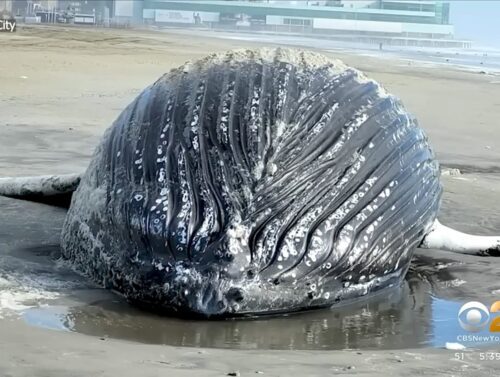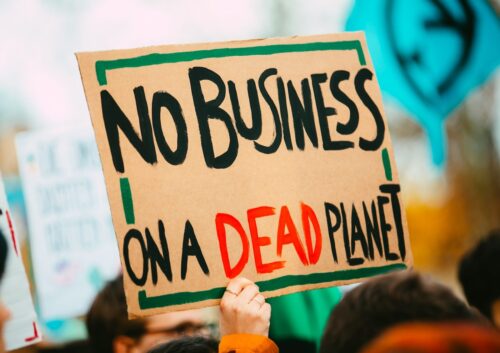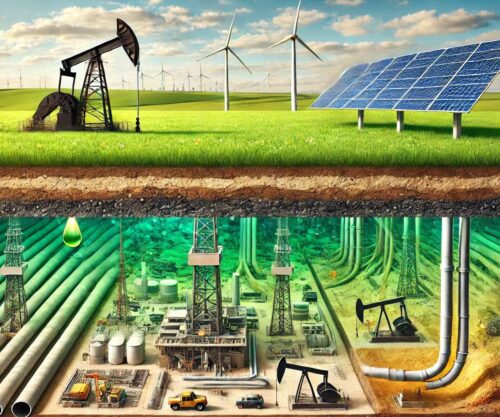
For decades, politicians and pundits have told us that “the science is settled.” Those four words have become a shield for power and a sword against dissent. But real science thrives on inquiry and investigation, not the suppression of it. [emphasis, links added]
What has emerged instead is not science at all, but a kind of secular faith — one that demands belief in man-made CO2-induced climate catastrophe and punishes heresy.
Yet, many scientists, including scientists who have worked within the climate bureaucracy, know how fragile the claim that “climate change is caused by CO2” really is.
As a former scientist with the UK Department of Energy and Climate Change and later a technical expert for the United Nations Environment, I saw firsthand how the modern climate narrative was shaped — not by evidence, but by politics.
Uncertainty wasn’t treated as a question to investigate; it was treated as a threat to suppress.
Entire careers and institutions came to depend on preserving a preordained conclusion: carbon dioxide, the same gas that feeds plant life, is destroying the planet.
What began as an environmental concern has hardened into climate orthodoxy — a moral creed enforced by bureaucrats, bankers, and media alike. It is a belief system that demands faith rather than understanding, obedience rather than inquiry.

None of this means the climate isn’t changing. It means that the conversation about why and how has been systematically narrowed — not by discovery, but by decree.
The Rise of Climate Bureaucracy
By the 1990s, climate science had morphed from an academic discipline into a vast global bureaucracy.
The Intergovernmental Panel on Climate Change (IPCC), founded in 1988, became the central authority, linking governments, corporations, and NGOs under a single mission: to define and manage “the problem.”

But the IPCC’s reports were never neutral. The “Summary for Policymakers” — the only section most journalists ever read — was often written before the science was finalized.
Conclusions drove the evidence, not the other way around. Scientists who emphasized natural climate drivers such as solar cycles or ocean oscillations were quietly pushed aside.
The institution that once claimed to study the climate became invested in proving a single narrative.
The Other Consensus
While the UN promotes its “consensus,” thousands of scientists disagree. In 2019, more than 2,000 experts signed the Climate Intelligence (CLINTEL) Declaration, stating bluntly:
“There is no [CO2-induced] climate emergency. The geological record shows Earth’s climate has always varied naturally.”
CO2 is not pollution — it is plant food, essential for life and photosynthesis. Yet the UN’s focus on carbon rather than true pollutants such as heavy metals or industrial toxins has diverted environmentalism from its original mission into politics.

I witnessed this distortion firsthand while working within the UN system. My role involved servicing the Pollution Release and Transfer Register Protocol — a multinational agreement that monitors pollutants to air, land, and water.
Real pollution exists, and it’s severe. But CO2 is not the problem. Confusing the two has served political and financial ends, not ecological ones.
When Science Becomes Statecraft
The line between scientific advice and political advocacy blurred long ago. Governments needed a crisis to justify regulation and taxation. NGOs needed fear to justify funding. And so “consensus science” — a contradiction in terms — entered the lexicon and became the new norm.
Real science advances through dissent and inquiry; consensus is a political construct, not a scientific one. However, once the term gained traction, it became a powerful weapon.

Questioning it marked one as a heretic. The language of faith — belief, denial, salvation — replaced the language of analysis. What began as an environmental concern hardened into a kind of secular theology: the carbon creed.
Complexity was the enemy. Climate models that showed alarming forecasts were amplified, while those showing uncertainty were ignored. What followed was the moralization of data.
Dissenters weren’t debated — they were denounced. What began as an environmental concern hardened into an ideology — one that rewards fear over reason.
Scientists Who Broke Ranks
Many respected scientists have spoken out.
Professor John R. Christy, Director of Atmospheric and Earth Sciences, University of Alabama, stated:
“The established global warming theory significantly misrepresents the impact of extra greenhouse gases.”
MIT’s Richard Lindzen observed, “In Earth’s long history, there’s been almost no correlation between climate and CO2.”
Dr. Nils-Axel Mörner, once with the IPCC, called the carbon narrative “a wonderful way to control taxation and people.”

Greenpeace co-founder Patrick Moore declared the crisis “fake science” hijacked by ideology.
Such voices are rarely heard in mainstream media, not because their credentials lack merit, but because they challenge the most politically valuable story of the century.
The Money Behind the Mandate
Follow the money, and the picture becomes clearer. The financialization of carbon — through emissions trading, carbon credits, and “green investment” funds — transformed moral urgency into a trillion-dollar industry.
Governments pour billions into renewable subsidies, enriching banks and corporations far more than benefiting the planet. If the climate crisis were truly existential, would its management really be entrusted to those who profit from it?

In my book Climate CO2 Hoax – How Bankers Hijacked the Environmental Movement, I detail how the 1992 UN Earth Summit in Rio marked the turning point — when financial elites effectively captured global environmental policy.
Reports and whistleblower accounts later suggested that key policies adopted at the summit were drafted without open debate — policies that subordinated national sovereignty to global ‘sustainability’ goals.”
Net Zero: The Mirage of Green Energy
The world’s economies are being restructured around “net zero,” but the irony is glaring. Building the infrastructure for so-called “green energy” — from solar panels to EV batteries — requires massive fossil-fuel use and destructive rare-earth mining.
Electric cars rely on lithium and cobalt extracted through environmentally devastating processes. The energy required to mine and refine these materials often exceeds what the vehicles save over their lifetimes.
In Germany, the green energy transition has turned a once-stable, low-cost energy grid into one of the most expensive in the industrial world.
In Ireland, plans to close the coal-fired Moneypoint power station were reversed in 2022 as the government quietly converted it to burn oil instead — an unspoken admission that “renewables” can’t power modern economies.
Read rest at American Thinker



















Well stated! At this point it is the grift that keeps the “Climate Change Scam” going. But here in the US with the Trump administration we are seeing some of this turn around as his administration gets rid of the distortions due to vast subsidies to the so-called “Green Energy” business. The problem though is that a future administration can turn all of it back around.